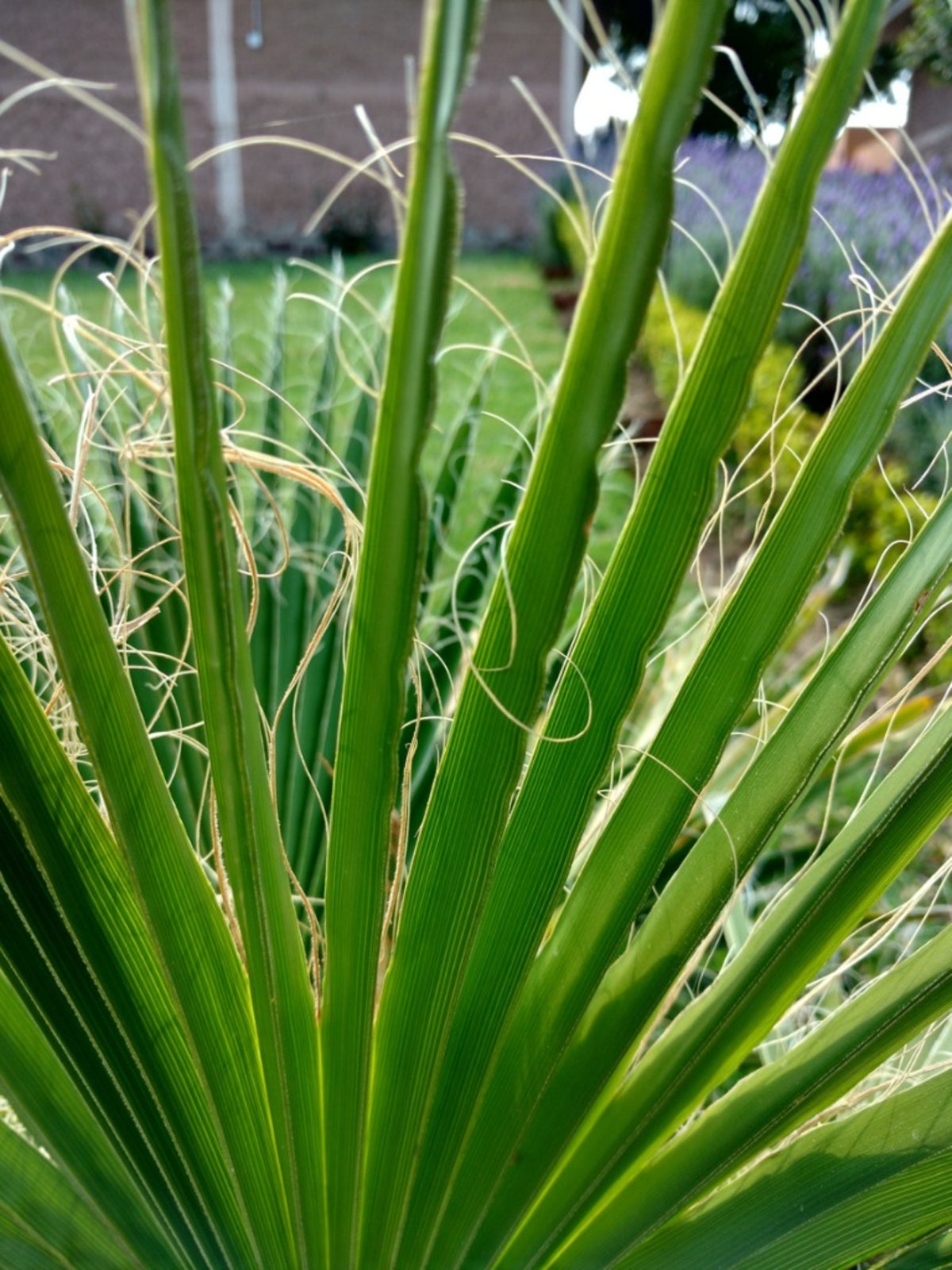What Is Blue Yucca: How To Grow Blue Yucca Plants


If you have ever been to the Chihuahua Desert, you would have noticed the blue yucca. What is blue yucca? The plant is a sharp-leaved wonder with a 12 foot height (4 m.) and powder blue tone. Yucca plants are succulents uniquely suited to hot, dry climates where moisture is scarce. They also produce amazing flowers set in clusters along a tall stalk. Read on for more blue yucca info including planting zones, care, and other items of interest.
What is Blue Yucca?
Yuccas are classic examples of desert flora. They have spiked, slender leaves which can be painful if not approached with caution. Blue yucca is an especially attractive example of the form due to its colorful leaves. Compared to many plants, blue yucca care is a breeze, provided the plants are installed in correct soil conditions and sun exposure. Once plants establish, very little maintenance is necessary to keep this plant healthy and looking its best.
Blue yucca (Yucca rigida) looks a bit like a plant out of a Dr. Seuss illustration. Once it achieves its maximum size, it develops into a tree with one or more long rough stems and draping foliage. However, getting to adulthood takes a long time with the plant's slow rate of growth. In its youth, the plant is nothing more than a bundle of rayed spikes, but over time the trunk elongates and occasionally more stems will be produced. The trunk is adorned with a skirt of spent leaves, mimicking the grass skirt of a hula girl.
More Blue Yucca Info
For a desert plant, the yucca has amazing cold tolerance, accommodating temperatures down to 0 degrees Fahrenheit (-18 C.).
This plant's scientific designation is Yucca rigida due to the stiff, erect leaves. It also goes by the names silver leaf yucca and palmilla. Not surprisingly, the plant is deer resistant, probably due to those sharp evergreen leaves.
The creamy flowers appear in spring and persist for weeks. Fruits contain the seed, which is the primary method of propagation. Fruits are cylindrical and fleshy and can be eaten. They are said to taste like a sweet potato. The cup-like flowers are also sometimes eaten.
How to Grow Blue Yucca
Growing Yucca rigida in the garden provides an elegant, easy plant with hardly any pest or disease issues. Choose full sun with well-draining, gritty soil when growing this plant. Once established, blue yucca is drought tolerant, although best growth develops with regular watering. As long as the roots don't stay soggy and the plant gets plenty of sun, it will be happy.
Gardening tips, videos, info and more delivered right to your inbox!
Sign up for the Gardening Know How newsletter today and receive a free copy of our e-book "How to Grow Delicious Tomatoes".
One of the secrets to blue yucca care is to leave the spent leaves on the stem. This will protect the trunk from sunscald and makes an interesting focal point. Yuccas are adapted to low nutrient soils and rarely, if ever, need fertilizing. Use pebbles or sand around the root zone as a mulch that will prevent weeds.
Water regularly when establishing the plant and during the summer, but reduce watering in winter when the plant is not actively growing. Blue yucca will produce a unique plant that has maximum impact in the desert-themed garden.

Bonnie Grant is a professional landscaper with a Certification in Urban Gardening. She has been gardening and writing for 15 years. A former professional chef, she has a passion for edible landscaping.
-
 Looking For Plants To Give You The Soft And Fuzzies? Try These 5 Fuzzy Leaf Plant Options
Looking For Plants To Give You The Soft And Fuzzies? Try These 5 Fuzzy Leaf Plant OptionsLovers of texture, drama, silver foliage and tactile plants will adore these special sensory garden additions. These fuzzy leaf plant options will leave you all aglow
By Susan Albert
-
 Get Ready For A Summer Of Hummers! Grow These Full Sun Hummingbird Plants and Flowers
Get Ready For A Summer Of Hummers! Grow These Full Sun Hummingbird Plants and FlowersIf you’re lucky enough to enjoy a sunny backyard, make sure you are maxing out on your pollinator opportunities and grow these full sun hummingbird plants and flowers
By Tonya Barnett